News, Brain cells protect muscles from wasting away
UC Berkeley scientists have now found brain cells that help clean up these tangles and prolong life—at least in worms (Caenorhabditis elegans) and possibly mice. This could lead to drugs that improve muscle health or extend a healthy human lifespan. When the brain senses a stressful environment—invading bacteria or viruses, for […]
Six Ways Bio-Inspired Design is Reshaping the Future
How exactly does one turn sunlight and water into usable energy? If it were possible to ask any living organism on Earth this question, you could do far better than asking a biologist or a chemist, or any other human being for that matter, and take the question directly to a […]
News, Electric Eel Inspired Soft Power Cells
University of Michigan researchers take inspiration from the electric eel to create soft and efficient power cells. The phenomenon behind the electric eel’s quick production of power is called transmembrane support which can keep the ions separate in its resting state. When the eel needs to protect itself, the ions are […]
Biology professor Kelly Sutherland studies the collective movement of Jellyfish through the ocean. She observes how the organisms pump water through their body in order to generate force that propels them forward. With new funding for her research, she is looking to build a robot that mimics […]
Scientists have been working on developing adhesives for the marine environment that are inspired by organisms that fix themselves to underwater surfaces, like mussels. These new bio-inspired hydrogels can act like superglue in highly ionic environments such as seawater, overcoming issues in currently available marine adhesives.
Ling Li, assistant professor of mechanical engineering from the College of Engineering at Virginia Tech, developed an armor based on the scales of mollusks. These scales developed to provide both flexibility and protection. Dr. Li and his team fabricated a synthetic flexible scaled armor analog using parametric computational modeling and multi-material […]
“Taking a cue from birds and insects, researchers have come up with a new wing design for small drones that helps them fly more efficiently and makes them more robust to atmospheric turbulence.” This new modification to smooth contours of the wing allows for better battery life and a safer flight […]
A platform that showcases the nexus of science and design in the field of biologically inspired design, using case studies, news and articles that are exemplary in their impact on the field, rigorous in their methodology, and relevant to today’s reader. Editions available in English and Spanish.
Biomimetics is the interdisciplinary scientific field focused on the study and imitation of biological systems, with the aim of solving complex technological problems. In this paper, we present a new bio-inspired design for microneedles (MNs) and MN arrays, intended for rapidly coating the MNs with drug/vaccine. The biomimetic approach consists in […]
News, Beating the heat in the living wings of butterflies
Engineers and biologists discover that butterflies have specialized behaviors and wing scales to protect the living parts of their wings. The nanostructures found in the wing scales could inspire the design of radiative-cooling materials to help manage excessive heat conditions; the sensory network in the wings could inspire the design of advanced flying machines.
Exploration Architecture, London
Exploration was established in 2007 by Michael Pawlyn after ten years working at Grimshaw on The Eden Project and other high-profile projects. We focus on regenerative design approaches that go beyond conventional sustainable design. Whereas sustainability has too often involved simply mitigating negatives, regenerative design implies a much more positive approach […]
Patternfox Consulting, Georgia
PatternFoxSM specializes in helping corporate design and research teams successfully adopt biologically inspired design. With more than a decade of experience with biologically inspired design, we offer clients: • A team with vast biological knowledge and insight, anchored by Prof. Jeannette Yen and Prof. Marc Weissburg. • Access to a network […]
Jellyfish float through the ocean like drones of the sea. Their simple nature makes them a natural muse for robot engineers building devices that can squeeze through tight spaces, check the ocean’s health, and eventually, explore the human body. This week, a team at Florida Atlantic University unveiled a new eight-inch […]
Researchers at Seoul National University’s Soft Robotics Research Center in South Korea and the Rebikoff-Niggeler Foundation (FRN) in Portugal have recently developed a robotic architecture structurally inspired by the pelican eel, a species of fish that lives in the deep sea. Their architecture, […]
Paper, Krill herd: A new bio-inspired optimization algorithm
In this paper, a novel biologically-inspired algorithm, namely krill herd (KH) is proposed for solving optimization tasks. The KH algorithm is based on the simulation of the herding behavior of krill individuals. The minimum distances of each individual krill from food and from highest density of the herd are considered as […]
News, PigeonBot Uses Real Feathers to Explore How Birds Fly
In a paper published today in Science Robotics, researchers at Stanford University have presented some new work on understanding exactly how birds maintain control by morphing the shape of their wings. They put together a flying robot called PigeonBot with a pair of “biohybrid morphing wings” to test out new control principles, and instead of […]
News, Robotic Hand Stays Cool by Sweating
A new robotic hand is able to “sweat” to cool down. Hydrogel robots offer more safety, as opposed to a rigid metal hand. However, because hydrogel has a high water component, it is very difficult to cool down. Researchers layered the hydrogel, and when various layers are […]
Euro Biomaterials 2020, Global
Euro Biomaterials 2020 is a great platform for building a gap between academia and industry through innovative decisions in research methods in biomaterial science. Currently biomaterials are facing so many challenges in the field of medicine. To overcome this challenge, Euro Biomaterials 2020 allows delegates and students […]
News, PUMA: Biodesign
PUMA Biodesign explores the new frontiers of biological design and fabrication to bring advances in science and biotechnologies closer to our daily lives through sport products. The exhibition in Milan, which is powered by the Biorealize prototyping platform (http://biorealize.com), will focus on how […]
Man-made armors often rely on rigid structures for mechanical protection, which typically results in a trade-off with flexibility and maneuverability. Chitons, a group of marine mollusks, evolved scaled armors that address similar challenges. Many chiton species possess hundreds of small, mineralized scales arrayed on the soft girdle that surrounds their overlapping […]
The Biodesign Immersion Experience (BIE) is an NIH-sponsored 8-week summer program that focuses on the first two stages of the bio-design process: needs finding and needs screening. Selected students visit clinics and companies around the bay area in order to identify clinical gaps where bioengineers can make […]
Applied Structural Discovery, Bio-design Institute, Arizona State University
The Biodesign Institute plays a critical role in advancing the research mission of Arizona State University. The Biodesign Institute embodies the guiding principles of the New American University, as defined by Arizona State University President Michael Crow, specifically, to conduct use-inspired research, fuse intellectual disciplines and value entrepreneurship. The Biodesign Institute […]
This design course is about advanced study in the fields of innovation and design that will address current and emerging issues. Topics will vary with each offering and will be announced at the beginning of each term. For every class, students get a five minute hands-on innovation challenge. There’s no case […]
Paper, Bioinspired spring origami
Origami enables folding of objects into a variety of shapes in arts, engineering, and biological systems. In contrast to well-known paper-folded objects, the wing of the earwig has an exquisite natural folding system that cannot be sufficiently described by current origami models. Such […]
Flexible yet sturdy robot is designed to “grow” like a plant
MIT engineers have developed a robot designed to extend a chain-like appendage flexible enough to twist and turn in any necessary configuration, yet rigid enough to support […]
Explores the biomechanical aspects of Cardiac Jelly and finds its morphological similarities to the mechanism through which jellyfish swim. An interesting connection to earlier experiments of artificially made jellyfish composed of cardiac cells. Notes evolutionary point of interest surrounding the evolution of a heartbeat.
Biomimicry Global Design Challenge, Mult. Sponsors, Global
The Biomimicry Global Design Challenge is an annual competition that asks teams of students and professionals to address critical global issues with nature-inspired solutions. The challenge is hosted by the Biomimicry Institute. Challenge finalist teams are invited to join the Biomimicry Institute’s Launchpad for an opportunity to turn their ideas into […]
Paper, Energetics of optimal undulatory swimming organisms
Fish-like swimming exhibits speeds, efficiencies and versatility relative to body size. Researchers found that minimizing cost of transport (COT) or maximizing swimming speed do not result in optimal efficiency. These efficiencies decrease with swimmer size. Their conclusions explain and bring together past studies about the trade-offs between locomotion and body size […]
Inspired by the Gentoo penguin, an architectural facade with traits similar to the penguin’s has been simulated to see whether or not it will provide efficient insulation in different weather circumstances. By analyzing the structure of the penguin feather, this researcher constructed a building wall with layers […]
Bioinspired Robotics and Design Lab, San Diego
Our research focuses on borrowing inspiration from nature to design automated systems with lifelike capabilities. For example, inspired by creatures like the starfish, we are designing soft robots composed of compliant materials. Likewise, inspired by fabrication in nature, from the small scale (proteins) to the large scale […]
BioDesign Challenge
The Biodesign Challenge (BDC) is a university competition that offers art and design students the opportunity to envision future applications of biotechnology. At the end of the year, each university chooses one team to showcase its project at the BDC Summit at MoMA […]
Abstract — We describe the design of an active soft anklefoot orthotic device powered by pneumatic artificial muscles for treating gait pathologies associated with neuromuscular disorders. The design is inspired by the biological musculoskeletal system of a human foot and a lower leg, and mimics the muscle-tendon-ligament structure. A key feature […]
News, ‘Artificial leaf’ makes fuel from sunlight
Researchers led by MIT professor Daniel Nocera have produced something they’re calling an “artificial leaf”: Like living leaves, the device can turn the energy of sunlight directly into a chemical fuel that can be stored and used later as an energy source. The artificial leaf — a silicon solar cell with […]
A study of a 3D-printed model has found that the structure of bones can be used to form sturdier objects and architectures. There are horizontal and vertical rods found in the bone that can degenerate and break. These rod-like and plate-like structures provide the stiffness and strength […]
Researchers were attempting to solve the problem of small-scale drones flying in low-Reynolds number regions. Smaller drones face high sensitivity to atmospheric turbulence which affects vehicle stability and control of aerodynamic efficiency, an important parameter for efficient flight parameters. These researchers drew inspiration […]
Paper, Hummingbird Flight Performance in Variable Aerial Environments
Abstract: Hummingbirds are well known for their ability to sustain hovering flight, but many other remarkable features of manoeuvrability characterize the more than 330 species of trochilid. Most research on hummingbird flight has been focused on either forward flight or hovering in otherwise non-perturbed air. In nature, […]
White reflection from cuttlefish skin leucophores
the skin of cephalopods is admired by biologists for its ability to camouflage quickly and effortlessly with its environment. This feat is accomplished via several layers of cells: chromatophores, which contain pigment granules which expand and contract to display color, iridophores, which reflect light of particular wavelengths structurally using refraction, and […]
Learn about our two Decals!
 Click here to find out more about our Fall Bioinspired Design Decal and our Spring Bioinspired Design in Action Decal – ALL MAJORS are welcome.
Click here to find out more about our Fall Bioinspired Design Decal and our Spring Bioinspired Design in Action Decal – ALL MAJORS are welcome.Berkeley BioDesign Community
 Click here to learn about the BioD: Bio-Inspired Design @ Berkeley student organization or here to signup for more info.
Click here to learn about the BioD: Bio-Inspired Design @ Berkeley student organization or here to signup for more info.Search
Student Login

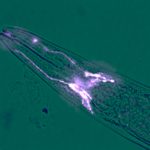
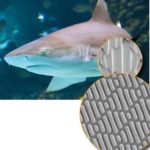
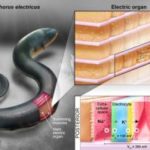
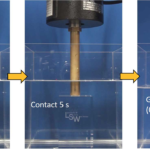
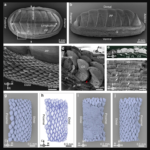



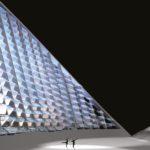

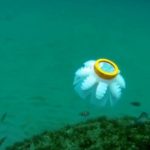
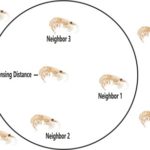

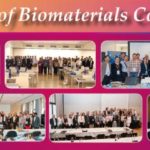
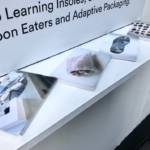
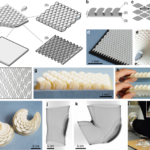
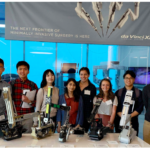

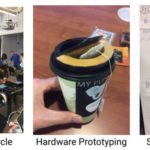
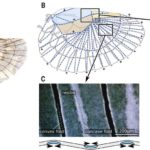

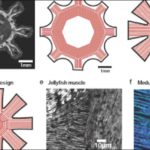
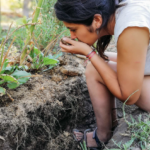
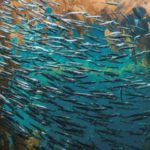
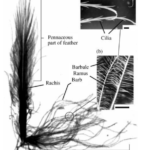
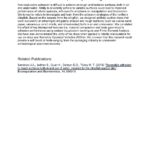

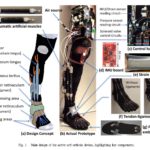
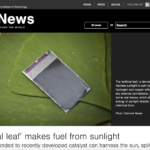
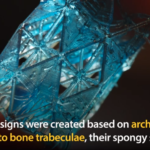

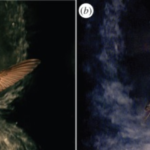
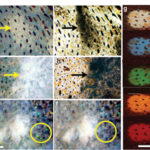


I imagine that the neurological circuits underlying these processes are governed by both 2d spacing maps with their brains as…
to reduce the impact of car accidents, it may be possible to study the force diverting physics of cockroaches to…
you see this type of head-bobbing stability in many avian creatures related to pigeons like chickens. the head ability to…
not like they taught horses how to run! this is an example of convergent evolution where both sea creatures and…
The brain functions in a similar way with neuronal connections. our brains are able to utilize the multiplicity of connections…